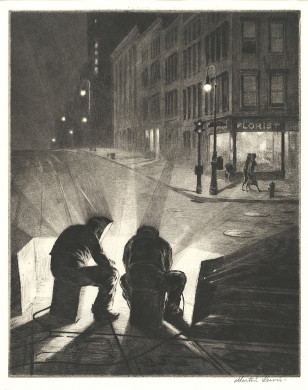Just as Memorial Day has become embedded in American culture as the day marking the beginning of summer, so too Labor Day, celebrated annually on the first Monday of September, has come to signify summer’s end. Serving as bookends to the summer season, both holidays are celebrated with three-day weekends that include travelling to visit friends and family, barbecues and picnics, swimming, and parades. Although it may seem strange to celebrate the value of labor by taking time off from work, these leisurely pursuits have long been regarded as fitting for a holiday meant to honor the “contributions workers have made to the strength, prosperity, and well-being of our country.”
While Labor Day is one of today’s most celebrated federal holidays—at least as indicated by yearly travel statistics—its connections with its political roots and historical purposes have become rather attenuated. In fact, the origins of the holiday are somewhat murky. Labor Day is more the product of evolution than federal fiat, and there is still some doubt as to who first proposed a holiday for workers. Some attribute Labor Day’s founding to Peter J. McGuire, co-founder of the American Federation of Labor, who proposed a celebration to honor those “who from rude nature have delved and carved all the grandeur we behold.” Others, however, attribute the founding of Labor Day to Matthew Maguire of the Central Labor Union in New York.
Though Labor Day was officially declared a national holiday on June 28, 1894, celebrations of the holiday began more than a decade before. Throughout the 19th century, labor leaders held parades and picnics to win support for labor reforms such as shorter working hours and to rally strikers. In May 1882, New York City’s Central Labor Union proposed that all union members join together for a protest rally in early September. They chose Wendel’s Elm Park, then the largest park in the city, as their location, and on September 5, 1882, more than 10,000 marchers joined a parade carrying signs reading, “Labor Creates All Wealth” and “Eight Hours for Work, Eight Hours for Rest, Eight Hours for Recreation.” After walking past City Hall, Union Square, and Uptown, the marchers returned the park to picnic and listen to speeches from union leaders. The evening was devoted to dancing and fireworks.
For the next several years, Labor Day was celebrated as an unofficial holiday by labor unions. The celebration continued to be held each September 5 until the Central Labor Union moved its celebration to the first Monday of September and urged other unions to do the same. (Some unions even fined workers for not showing up to Labor Day rallies and parades.) In 1885 and 1886, municipal ordinances made Labor Day an official holiday in some cities around the country.
A movement soon began to secure state legislation. New York State filed the first bill, but the first state to make it a law was Oregon, on February 21, 1887. Legislative enactments in Colorado, Massachusetts, New Jersey, and New York created the Labor Day holiday shortly after Oregon. Within ten years, Connecticut, Nebraska, and Pennsylvania also joined in with Labor Day laws. In 1893, workers in New York City took an unpaid day-off to march around Union Square in support of a national Labor Day. By 1894, 23 additional states had adopted the holiday.
Labor Day was not the only holiday dedicated to America’s working men and women. May Day, recognized as the International Labor Day, had also developed a large following throughout the United States. In some cities, the size of May Day events rivaled those of Labor Day. Despite the popularity of May Day and the appeal of an international holiday, the American Federation of Labor (AFL) pushed to secure Labor Day as America’s primary celebration of its workers.This was due to the more radical tone that May Day had taken. Especially after the 1886 Haymarket Square Riot, where several police officers and union members were killed in Chicago, May Day had become a day to protest the arrests of anarchists, socialists, and unionists, as well as an opportunity to push for better working conditions. Samuel Gompers and the AFL saw that the presence of more radical elements of the labor movement would be detrimental to perception of the festival.
To solve this, the AFL worked to elevate Labor Day over May Day, and also made an effort to bring a more moderate attitude to the Labor Day festivities. The AFL, whose city labor councils sponsored many of the Labor Day celebrations, banned radical speakers, red flags, internationalist slogans, and anything else that could shed an unfavorable light upon Labor Day or organized labor. The subsequent push to make Labor Day a national holiday was an extension of these efforts to keep American labor free of the more radical, internationalist, and anti-capitalist elements whose ideas were (and still are) given voice in May Day rallies.
These efforts were successful, and Labor Day eventually became a federal holiday, signed into law by President Grover Cleveland in 1894. Cleveland was by no means a pro-labor president. Just six days before he signed the bill to make Labor Day a national holiday, Cleveland had ordered the brutal suppression of the Pullman railcar worker’s strike by 12,000 U.S. Army troops, an act which demonized him in the eyes of organized labor. Fearing a primary challenge from the populist William Jennings Bryan, Cleveland recognized that a conciliatory effort was necessary. The political maneuver didn’t achieve its desired effect, however: Cleveland lost the Democratic Party’s 1896 presidential nomination to Bryan.
Return to The Meaning of Labor Day.




Post a Comment